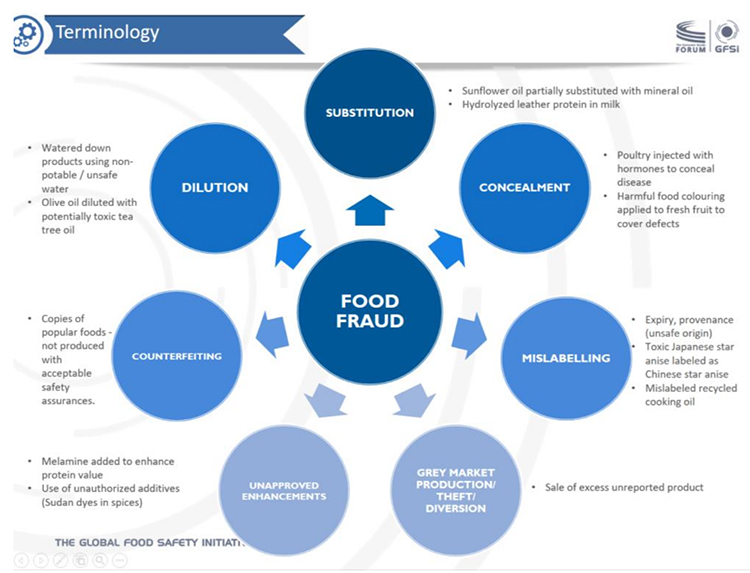If there’s anything to take away from our three-part series on Architecting the Perfect Food Safety Team, it’s to be thoughtful and cognizant of what behavior and end results you’re looking for from your team.
When you enter the ASSESS phase, it’s important to arm yourself with questions that elicit responses that give you an indication of whether the person CAN perform well and who will thrive in your company’s culture.
Additionally, you want that behavior and end result to be synced and aligned against the broader organization’s mission.
Bob Pudlock will be moderating the panel discussion, “Food Safety Leadership: Earning Respect”, at the 2019 Food Safety Consortium | October 1–3 | Schaumburg, ILAs a director or VP, that’s an important distinction. A company that’s in M&A mode is much different than one that’s under pressure from a major customer to get in compliance with their supplier guidelines. The ideal candidate for one is not necessarily the best fit for the other.
Let’s say you’re a director or VP at a company who has just acquired a smaller company certified under a different GFSI scheme. For the next year to two, other integration efforts have been prioritized over folding the acquired company’s scheme into the parent company. For the foreseeable future, that means there will be a disconnect in some protocols, reporting and expectations between the parent and acquired company.
In this scenario, we brainstorm with our client and bring forward themes or dynamics that will be present.
- Transition -> Change -> Ambiguity
- Gray area -> Open loops not immediately resolved -> Discomfort
- Acquisition / Integration -> power/influence/reporting structure transition -> Ambiguity
Two themes that come out of this brainstorm are “dealing with ambiguity” and managing discomfort associated with a GFSI certification or being downgraded as a priority while the company pushes other objectives forward.
For these themes, now we look to construct questions that elicit how one has behaved in past. We can also construct a hypothetical scenario to see how an individual would strategize and act moving forward.
As you look at potential hires into the organization at this stage, you’re going to be presented with a range of candidates that exhibit varying degrees of emotional flexibility.
Emotional flexibility is the ability to identify, assess and adjust responses to events, circumstances or triggers as they arise.
If a candidate in this scenario is rigid or exhibits a black and white “compliance or bust” mentality, that’s going to be a source of constant friction for the individual and those with whom they interact. During the integration efforts, that person is going to have a hard time calibrating their feeling of incompleteness or disconnect from the broader organization.
A candidate that exhibits a low degree of emotional flexibility will have a harder time “rolling with the punches” and will make those around them uncomfortable—they’ll push and work towards a set of expectations that is not consistent with the broader organization’s timeline. Now there is certainly an opportunity to manage that individual’s expectations, but the less we have to do that as leaders, the better—hence, the importance of accurately assessing and pegging the attributes early and often in the interview process.
So, how do we do that?
We advocate for what we call “layered” interview questions. In simple terms, it’s asking a question a number of different ways and in different contexts to elicit responses that offer an accurate prediction of how someone will react in the future.
The first question might be (one layer): How do you deal with ambiguity?
Another question would be: How have you dealt with a situation in the past where your boss was not on site but your plant manager took on day-to-day supervising and reporting? The hiring team can shade in specifics to make the scenario more realistic. The core of the question is to create an image of an ambiguous environment.
And yet another question would be (this is hypothetical): Let’s say you’re alone and have been put on the spot to solve this food safety problem. Your boss is not available for the next two days and you believe that there might be a disconnect between how the plant manager might solve the problem and how your boss would solve it. What would you do?
Asking a question three different ways will ferret out canned, stale answers. Additionally it will test a candidate’s ability to “connect the dots” between past experience and current/future challenges in the workplace. Asking these questions and observing the responses is a significant improvement over what’s typically done.
Taking it a step further will give you an even more accurate prediction of whether a candidate will thrive or perish in this environment. To test this, drill down further on the candidate’s responses to each layered question to the point where you determine what toll, if any, these situations took on them; in other words, how does ambiguity and discomfort in the workplace make them “feel”? Just because someone has experience in ambiguous climates or has managed “transitional” situations like a company’s M&A phase doesn’t mean they thrive on it. For some people, it’s a constant stressor, and if they’re not emotionally resilient, at some point they will break or wear down.
Drilling down to this level will give you a more accurate feel to how resilient and tolerant one will be in your company’s current and future culture. Additionally, you’ll determine whether or not their level of emotional flexibility will allow them to thrive or cause a constant stressor that will ultimately wear them down.
This is just one example of how to use a layered question. There may be three to four key themes that you want to dig into for each role in your organization. Pairing the layered questions (same question, multiple contexts) with eliciting feeling-based responses will give you an even more accurate predictor of who will thrive on your team. It will also isolate and disqualify individuals who have canned responses to interview questions and/or who can’t think on their feet, or struggle to tie past experiences to current state challenges.
This might “feel” like a lot of effort, but it’s an immense time and energy saver when you balance it against the aggravation, time and energy-suck you experience with a poor or mediocre hire.
Read on to Part III of this series: Architect the Perfect Food Safety Team: Capture Your Ideal Candidate and Set Them Up for Success



















